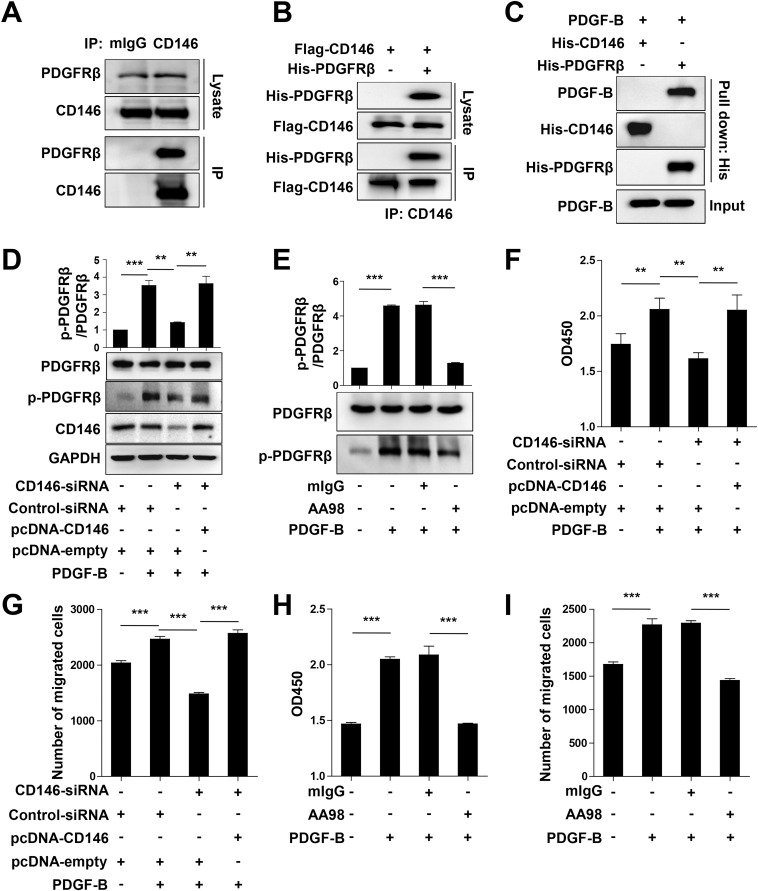Fig. S9.
Targeting CD146 results in impaired PDGFRβ activation and cell proliferation and migration in 10T1/2 cells. (A) Coimmunoprecipitation (IP) assay of endogenous CD146 and PDGFRβ in human smooth muscle cells. CD146 from cell lysates was immunoprecipitated with anti-CD146 AA1. (B) HEK293 cells were transfected with Flag-CD146 and His-PDGFRβ. Cell lysates were immunoprecipitated with anti-CD146 AA1. (C) PDGF-B was incubated with His-PDGFRβ or His-CD146, and then anti-His antibody was used to precipitate the complex. (D) 10T1/2 cells were transfected with CD146-siRNA or cotransfected with CD146-siRNA and CD146-expressing plasmid, and then stimulated with PDGF-B (20 ng/mL). PDGFRβ activation was detected by Western blotting. Quantification of the relative p-PDGFRβ/PDGFRβ index is shown. (E) 10T1/2 cells were stimulated with PDGF-B (20 ng/mL) in the presence of mIgG or AA98 (50 μg/mL). PDGFRβ activation was detected by Western blotting. Quantification of the relative p-PDGFRβ/PDGFRβ index is shown. (F and G) 10T1/2 cells were treated as described in D. Cell proliferation and migration were detected by using a CCK-8 assay (F) and transwell Boyden chamber assay (G), respectively. (H and I) 10T1/2 cells were treated as described in E. The cell proliferation and migration were detected by CCK-8 assay (H) and transwell Boyden chamber assay (I), respectively (**P < 0.01 and ***P < 0.001). Data represent three independent experiments.

